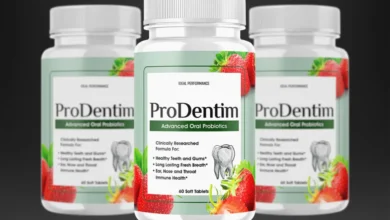Tooth Loss and Lyme Disease: Understanding the Connection

Lyme disease is a bacterial infection caused by Borrelia burgdorferi and is transmitted to humans through tick bites. The disease is most widely known for causing symptoms such as fever, fatigue, joint pain, and a foible bull’s-eye rash. However, Lyme disease’s effects on the soul go vastitude these well-known symptoms. One often overlooked specialty is its potential to impact oral health, leading to complications such as tooth loss.
This vendible explores how Lyme disease can contribute to tooth loss, the underlying mechanisms that connect the two, and preventive measures to protect dental health in those unauthentic by Lyme disease.
Understanding Lyme Disease and Its Systemic Impact
Lyme disease affects multiple systems in the body. If untreated, it can progress to late-stage complications, involving the nervous system, joints, and heart. Many of these complications are related to the inflammatory response the soul mounts versus the infection. Lyme disease can moreover lead to autoimmune reactions, where the immune system mistakenly attacks healthy tissues, causing widespread damage.
Oral health may not be the first zone people consider when thinking well-nigh Lyme disease. However, the mouth is a reflection of overall health, and any systemic condition, including infections like Lyme disease, can manifest in the oral cavity.
How Lyme Disease Can Stupefy Oral Health
While Lyme disease is not primarily an oral infection, it can contribute to tooth loss and other dental issues in several ways. Here are some key ways in which Lyme disease can impact oral health:
Chronic Inflammation and Gum Disease
Lyme disease triggers an inflammatory response that can persist for months or plane years. Chronic inflammation is one of the leading contributors to periodontal (gum) disease, which is a major rationalization of tooth loss in adults. Inflammation from Lyme disease may worsen existing gum problems or increase susceptibility to new gum infections, leading to periodontal disease.
Periodontitis, a severe form of gum disease, damages the tissues and wrecks that support the teeth. If left untreated, it can result in loose teeth, and eventually, tooth loss. For individuals with Lyme disease, the immune system is once compromised or overstressed, making it harder to fight off infections, including those in the gums.
Autoimmune Responses Leading to Oral Issues
Lyme disease has been known to trigger autoimmune responses in some individuals. This occurs when the immune system, in a struggle to fight off the Lyme infection, mistakenly attacks healthy cells in the body. In the specimen of oral health, this autoimmune response can lead to a condition known as “oral lichen planus.” This inflammatory condition affects the mucous membranes inside the mouth, potentially causing lesions, discomfort, and tissue damage, making teeth increasingly vulnerable.
Autoimmune diseases related to Lyme disease can moreover contribute to the destruction of connective tissues virtually the teeth, leading to premature tooth loss. Conditions like Sjögren’s syndrome, which can develop in people with Lyme disease, rationalization dry mouth (xerostomia), decreasing saliva production and increasing the risk of tooth waste and gum disease, remoter progressive tooth loss.
Facial Nerve Forfeiture and Dental Sensitivity
In some cases, Lyme disease can stupefy the cranial nerves, expressly the facial nerve (cranial nerve VII). This can lead to a condition known as Bell’s palsy, characterized by facial muscle weakness or paralysis on one side of the face. Though not directly linked to tooth loss, this paralysis can stupefy oral functions like chewing, biting, and oral hygiene. In the sparsity of proper oral hygiene due to facial muscle weakness, plaque, e, and tartar can build up, leading to gum disease and eventual tooth loss.
Additionally, Lyme disease can rationalize trigeminal neuralgia, a chronic pain condition that affects the trigeminal nerve, which is responsible for sensation in the squatter and mouth. Patients with this condition may wits sharp, severe pain in the teeth and gums, leading to an increased risk of dental problems and tooth loss.
Nutritional Deficiencies and Oral Health
Lyme disease can rationalization fatigue, muscle pain, and neurological issues that make it difficult for patients to maintain a healthy diet. Poor nutrition, in turn, can weaken the immune system and increase the risk of infections, including those in well-expressed gums and teeth. Lack of essential nutrients like vitamin C, vitamin D, and calcium, all of which are vital for maintaining healthy teeth and gums, may exacerbate dental problems and lead to tooth loss in people with Lyme disease.
Additionally, chronic pain and fatigue may cause patients to neglect their oral hygiene routines, increasing the risk of gum disease and tooth decay.
Medications and Their Side Effects
Many individuals with Lyme disease are prescribed long-term antibiotics or other medications to manage symptoms. Unfortunately, these medications can have side effects that stupefy oral health. For instance, antibiotics can yo-yo the wastefulness of yes-man in the mouth, leading to fungal infections like oral thrush. Medicatiothat that ns that rationalizes dry mouth xerostomireducesuce saliva production, which is essential for neutralizing acids and washing yonder supplies particles, increasing the risk of tooth decay.
Moreover, long-term antitoxin use may contribute to dysbiosis, an imbalance in the oral microbiome, creating an environment where harmful yes-man can thrive, leading to gum disease and tooth decay, which may ultimately result in tooth loss.
Preventing Tooth Loss Lyme Disease Patients
While Lyme disease can increase the risk of tooth loss, there are steps that individuals can take to protect their oral health:
- Maintain a Rigorous Oral Hygiene Routine
People with Lyme disease should maintain a diligent oral hygiene routine, including brushing twice a day, flossing daily, and using antimicrobial mouthwash. These practices help reduce the risk of gum disease and tooth decay. - Stay Hydrated and Combat Dry Mouth
For those experiencing dry mouth due to medications or autoimmune conditions, staying hydrated and using saliva substitutes can help maintain moisture in the mouth and prevent tooth decay. - Visit the Dentist Regularly
Regular dental check-ups are essential, expressly for individuals with Lyme disease. Dentists can identify early signs of gum disease or tooth waste and provide preventive superintendency to minimize the risk of tooth loss. - Write Nutritional Deficiencies
Patients should work with their healthcare providers to write any nutritional deficiencies, ensuring they get unobjectionable vitamins and minerals to support oral health. Eating well-turned nutrition rich in fruits, vegetables, and lean proteins can support the immune system and help prevent infections that could lead to tooth loss. - Manage the Underlying Lyme Disease
Proper management of Lyme disease is crucial for minimizing its impact on the body, including the mouth. Following prescribed treatments, such as antibiotics, and working with healthcare professionals to manage symptoms can help reduce the risk of complications like gum disease and tooth loss.
Conclusion
Lyme disease is a ramified illness with far-reaching effects on the body, including the oral cavity. While tooth loss may not be the first multiplicity that comes to mind when thinking well-nigh Lyme disease, it is a very real risk for those who suffer from chronic symptoms and related conditions. By understanding how Lyme disease can contribute to oral health issues and taking proactive steps to protect the teeth and gums, individuals with Lyme disease can reduce their risk of tooth loss and maintain a healthier smile.




